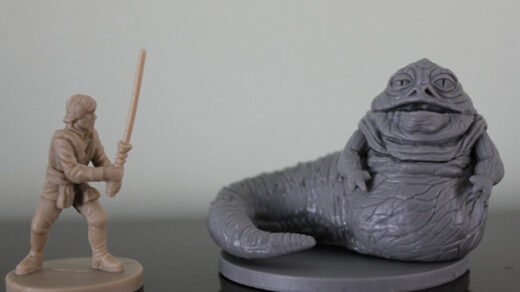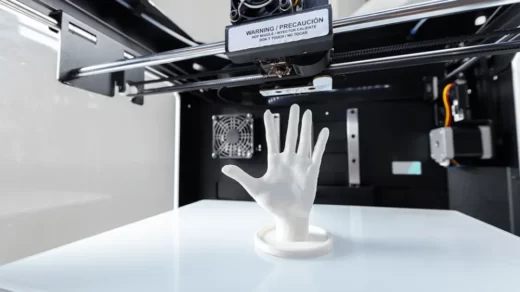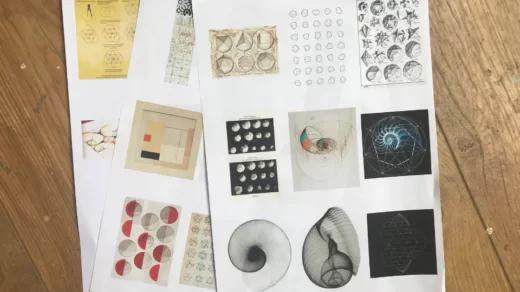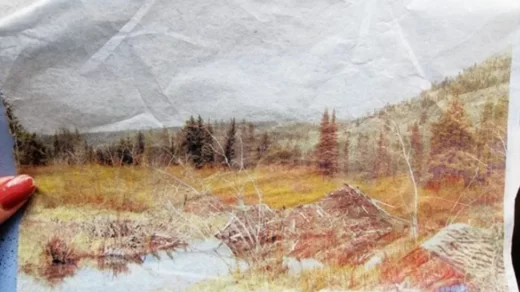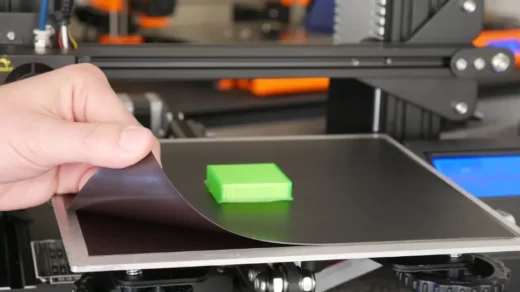A 3D printer is an effective tool. You can use it to make a variety of things, such as intricate 3D printed cosplay costumes, one-of-a-kind jewelry, replacement parts, models of your preferred pop culture characters, etc.
It’s likely that if you own a 3D printer, you want to use it as much as possible. One of the simplest ways to accelerate your build is by letting it print overnight. However, is it safe to leave a 3D printer overnight?
You must always keep an eye on your 3D printer because it has several hazardous features. According to reports, the printer caught fire because of frayed electrical wiring or a broken bed warmer.
Table of Contents
Is A 3D Printer Safe To Leave Running Overnight?
Most 3D printers won’t operate unattended. Moreover, 3D printers are prone to fire. In fact, there are a lot of 3D printers that can catch fire because they are made individually. While this is not always the case, using a 3D printer alone may not be safe. This is especially true if you are printing in a small space. It is unsafe to enter your room because smoke can accumulate here overnight.
However, there is a sizable group that leaves 3D printers running unattended over the course of the night. In actuality, most manuals caution against leaving 3D printers unattended for extended periods of time. Many people still do, though. The majority employ mitigation strategies like fire-fighting tents made with a 3D printer. Fire and harmful fumes are less likely as a result. No printer manufacturer, though, would advise this. On the other hand, it is strongly advised against using the printer without continuous monitoring. This advice stems from the fact that any 3D printer can get stuck, stuck, dropped, or otherwise burn out, creating a potential fire hazard.
How Long Can A 3d Printer Run?
Some Ender 3 users claim that their printers are fine when left on overnight. Ender 3’s manufacturer claims that with proper care and upkeep, users can expect to get at least five years’ worth of use out of their machine. But keep in mind that the durability of the Ender 3 and numerous other devices depends on how well-maintained and how frequently used 3D printers are by hobbyists.
However, anyone concerned about a potential fire hazard from a 3D printer should better pause the device right from the control panel. If you own Ender 3 and don’t want to leave it to print overnight, you can press the 3D printer to see the usual options and choose to “Pause Print.” You’ll pause your gadget and return its head and bed to the home position. Once you are ready to resume your print, click the “Resume Print “option.
By the way, many print shops that offer reliable 3D printing services worldwide often take overnight print orders. As a result, anyone using the recommended safety measures shouldn’t experience any 3D printer fire issues. The best and most expensive printers can frequently operate continuously for weeks.
To perform some maintenance, it is necessary to halt printing occasionally. For instance, the printer bed needs to be cleaned. It will guarantee proper print adhesion. Re-leveling the bed and giving your machine a break are also great ideas.
Fire Safety Of 3D Printer
If you enjoy printing in the middle of the night, you might want to set up a camera to live stream the print to your phone and check it periodically throughout the night.
Installing a smoke detector in the room, whether it be the Ender 3 or another device, is a good idea. It’s a good idea to keep a fire extinguisher in the space.
While it’s rare for a 3D printer to start a fire, it can happen. If this does occur, it is crucial to take quick action to maintain control.
Fire Suppression Of 3D Printer
To protect your machine, make sure to buy the best 3D printer for cosplay, the most affordable but high-quality 3D printer, or a fireproof 3D printer enclosure.
Your best 3D printer fire suppression tool can be an appropriate enclosure. Most brands of 3D printing equipment can be protected by fireproof and flameproof boxes.
However, inside a 3D printer enclosure that is fireproof, you must add ventilation and make sure your device does not overheat. The life of your printer motors and the electronics inside a box will be shortened by excessive heat. The cold end could also become too warm and cause problems.
If you use hot ends, make sure the enclosure’s internal temperatures are between 38 and 42 degrees Celsius (100 and 107 degrees Fahrenheit).
You’ll be fine if you follow the manufacturer’s instructions when you consider making a special fireproof enclosure for a 3D printer to use for fire suppression.
Safety Measures To Take
Never leave the printer unattended. In any case, it’s critical to take precautions to lessen any possible risks if you do.
Machine Automatic Shutdown Function
The majority of 3D printers have an auto-off function. It’s important to use them. This involves consulting the manual and perhaps writing a script to turn the 3D printer off immediately after the build is finished. This will be fairly simple on most machines. However, each machine is different, and depending on the strength of the firmware that came with the printer, it may be more difficult.
depending on the printer. Check the manual and set it up.
Enable Thermal Runaway Protection
Most 3D printers have a setting called thermal runaway protection that lets you lessen or even completely avoid most fire risks. Here, if there is any abnormality in the thermistor reading, the printer simply stops printing. For instance, if the reading is unacceptably high, unacceptably low, or if it completely stops. This stops issues like sensor or thermistor misalignment from starting fires.
Thermal runaway typically occurs when a thermistor is misaligned, misaligned, or malfunctioning. Fortunately, it is typically turned on in a lot of 3D printers. For example, Prusa and MakerBot use thermal runaway protection by default. Some 3D printers, like the Marlin and Endor models, demand that you activate this feature. Check your manual to see what thermal runaway protection your printer actually has, and make sure the feature is activated.
Keep The Printer Away From Flammable Objects
Many printers are hot. Actually, some prints have temperatures resembling those of an oven. Keep them far away from anything that could catch fire. This entails setting up the 3D printer in a well-ventilated space on a ceramic or metal surface or tray. Additionally, make certain that paint, resin, cleaning supplies, etc. are not stored nearby. If you keep these types of materials in the same room, try putting them in a metal or other filing cabinet, they will suffer less if something goes wrong.
Remote Monitoring System
When your 3D printer is left unattended, remote monitoring systems like webcams and software can offer a lot of protection. For instance, the webcam enables you to instantly check the webcam’s visual status. If you’re going to bed, it won’t help much, but if you’re going to work, it will be very beneficial. Most 3D printers can be reliably monitored remotely with apps like Octoprint. This allows you to monitor, control, and shut down the 3D printer when it exceeds certain settings. This adds a nice safety measure, provided your hardware is measured correctly. In order for you to see how your printer is performing at any time, Octoprint also provides remote monitoring, which includes a webcam that is embedded, progress updates, and a GCode visualization tool. Additionally, the remote start/stop/shutdown feature gives you more control over the printer shutting down even if you’re not in the room. While it won’t do much to help you sleep, it’s a nice extra measure of control when you’re leaving the house or heading to work.
Smoke Detectors
In the event of a fire, smoke detectors will alert you if there is an issue, allowing you to act quickly. even if your home is equipped with carbon monoxide and smoke detectors. Here you need to install two or two detectors in a room with a 3D printer. This guarantees that you are informed of issues as soon as they appear.
If you do plan to keep your 3D printer running overnight, you might want to consider a smart smoke detector. These devices will send an alert to your phone to wake you up. So you can respond to a potential fire as quickly as you can and avert disaster.
Fire Extinguisher
Class C fire extinguishers must be available whenever potentially flammable machinery is operated. Fires that may still be connected to live power can be put out using Class C fire extinguishers by using dry chemicals or carbon dioxide. It is preferable to turn off the electricity to the room with a circuit breaker box first in the event of a fire. This ensures that any power that could have sparked a fire is cut off. Additionally, it lessens the chance that a fire will result in a short circuit and the danger of a subsequent fire in the house.
For best results, buy a fire extinguisher and take a class on how to use it. The majority of local fire departments offer free introductory fire management courses, which cover the correct handling and storage of fire extinguishers.
Enclosure
The risk of leaving a 3D printer unattended can be significantly decreased by enclosing it in a fireproof cabinet or tent. Commercial sales of these goods are typical. However, you must still make sure that your 3D printer has enough ventilation. Additionally, it’s almost never a good idea to keep a 3D printer in a cabinet because it can burn wood or composite materials.
Instead, You Can Stop It Overnight
Start/stop and pause buttons are typically built into 3D printers. Your printer can resume where it left off if you don’t cut power or lose saved print data. In this way, even if a project takes more than a day, you can print larger ones without risk.
Additionally, it’s preferable to abandon 3D printing altogether midway through. For example, printing may be lost if you do this. It’s almost impossible to pick up where you left off without using a multipart file.
How To Complete A Longer Print
There are a few strategies that you can use when taking on large 3D printing projects without overnight printing.
First, it’s essential to break your model down into multiple smaller prints using your favorite slicer. The post-production stage allows for the assembly of these separate prints. If you do this, you will be able to create something larger than the base plate.
There are several ways to join the prints together. Superglue is the most popular choice. If you want to make a stronger bond, you can use screws. Many intricate 3D printing models are available on Gambody.com, many of which have slots for neat assembly that eliminate the need for glue and screws. You can see over 50 photos of finished no-glue 3D prints shared by many Gambody enthusiasts.
It’s also important to look at the settings of your printer. Verify again that everything has been calibrated properly. When making a larger model, any minor problems will be amplified.
The kind of material you are using should be considered. You can investigate a wide variety of filaments. Unfortunately, not all of them are good for creating larger projects. ABS, for example, shrinks as it cools, which can be problematic because the model might crack. Resin is too expensive to use for building giant models. But PLA could be great for making life-size 3D prints.
It can take some practice to print larger models. Don’t be upset if it doesn’t turn out exactly as you had hoped. If you made any errors, kindly note them so that you can correct them moving forward. Before you know it, you’ll be printing large, complex models effortlessly and without having to worry about a 3D printer catching fire. Remember that you don’t have to leave a 3D printer running overnight if you are afraid of catching fire. During the daytime when you are present and in control of all circumstances, pause printing and resume printing.
Conclusion
3D printers are fantastic devices that help bring your imagination to life. Follow some safety precautions to avoid 3D printer fire hazards. Avoid leaving the machine unattended, and consider pausing printing instead of printing overnight, or constructing a fireproof 3D printer enclosure according to all safety measures provided by the manufacturer. Although it’s unlikely that anything will go wrong, especially if you take the right safety precautions, it’s best to think through all the risks and avoid potentially hazardous circumstances.



